
Visiting a building site and seeing all the large machinery and workers in action is exciting. But for the children of FRS (Finchley Reform Synagogue) Kindergarten in north London, there was the added attraction that it was their former building they saw being demolished.
They moved out of their building in autumn 2020 and into a temporary space to make way for a new community building to be constructed which will house their nursery. ‘We were desperate for the construction to start because many of our children are excited by builders so we wanted to tap in to that interest,’ says head teacher Emma Wohl. ‘Quite a few of the children live locally and were aware of the building site and had lots of questions.
‘Going to the building site was also part of the transition process because it helped the children to make sense of why they moved out of their old setting.’
SEEING CHANGE
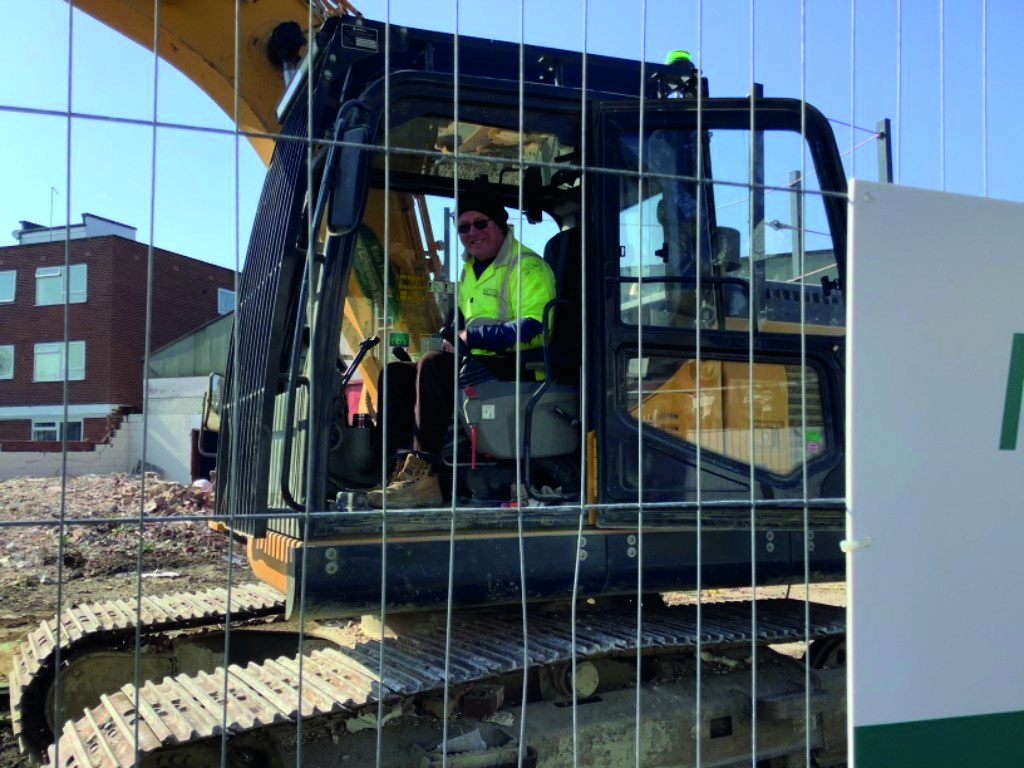
The group of 12 three- and four-year-olds navigated their way from their new building to the construction site, a short walk away. ‘That in itself was interesting,’ says room leader Aimee Middleton. ‘As we turned up the road where the old building was they started to recognise all the changes and hear the machinery, which added to the excitement. They noticed the building signs and health and safety notices which were familiar to them because they linked with their construction role play.
‘We had a view of the whole site and the children talked about the changes they could see and they watched in awe as excavators rolled around the site picking up mounds of rubble. There were lots of questions about the machinery.’
A builder answered the children’s queries and explained how they were knocking down the old building and removing the rubble to make the ground ready to be built on again. Children were fascinated by the construction timeline – what was happening when and how long the builders would be there for. They were also interested in the safety equipment, such as the hi vis jackets and hard hats.
‘Even though most of the main building was completely gone, the children were able to pinpoint some recognisable features, such as the doorway they used to go through for lunch and some bits of playground equipment,’ says Aimee.
While none of the children were upset to see their kindergarten being demolished, one did check that none of the younger children had been left behind and others wondered about certain toys.
ACTION PHOTOS
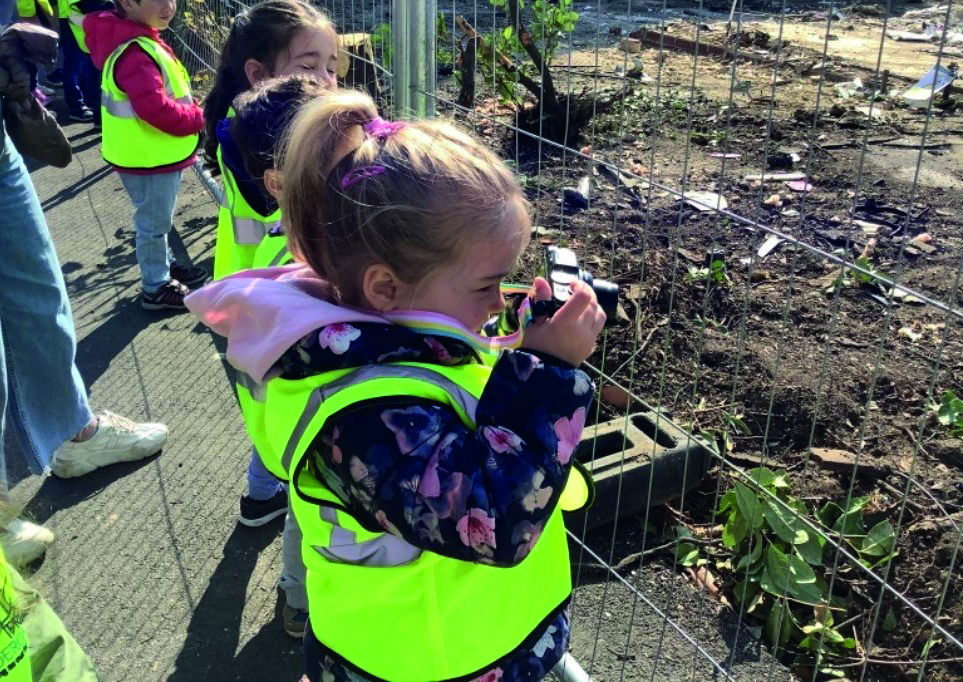
Staff had recently undertaken training in photography and purchased digital cameras. Children were enjoying experimenting with the cameras in the learning environment but the building site trip was the first opportunity for them to take the cameras outside of the setting. They were asked to use the cameras to take photographs of aspects of the building site that interested them or that they wanted to document and remember.
‘It was interesting looking at the different photographs to see the aspects that they focused on, such as interesting angles and perspectives,’ says Aimee.
‘A few of the children focused on the actual machinery – excavators and diggers – with some looking at specific parts in detail and the big wheel tracks that the machines made. Other children were interested in where the structure of the building had been, the parts that remained and the mounds of rubble. Some children captured the workforce in action.’
MOVING PARTS
On return to the nursery, the children reflected on their trip and watched a slideshow of their photographs. ‘It encouraged conversation, listening to each other and taking on board other people’s ideas as they talked about who had taken the photos and why,’ says Aimee.
Emma adds, ‘Our old building had Tarmac everywhere, but now we are fortunate to have our “Secret Garden”.
‘The visit really inspired a couple of children’s passion for photography and photographing nature outside. They have shown a really keen eye for detail and we’ve been amazed by their photos.’
A selection of photos were printed out and added to a display board in the construction area along with photographs of landmarks and famous buildings for children to reference and inspire them with their own construction projects.
‘One of the children had taken an excavator photo and spent days planning how to build an excavator model,’ says Aimee. ‘He thought about what materials he’d need and used the hammer and nails and cut the main body of the excavator out of wood. He used a book for reference to find out more, including what excavators are used for and how they work, and he reflected on the whole process as much as possible, such as how to construct the moving parts.’
RETURNING TO THEIR WORK
Staff noted how the site visit enriched the children’s role play after watching the teamwork of the builders in action. ‘Their language became more technical and they were using phrases like “Hold on a minute, guys!” or “Toby’s coming through now, so stand back”,’ says Aimee. ‘They referred to different pieces of machinery by name such as “chain saw”, which they’d seen, and “bulldozer”.’
The construction site signs that children had taken an interest in were brought into the role play and also used alongside their own work in the construction area. Children started to leave signs next to their buildings, such as ‘Please be careful of the building site’ and requests to not knock them down because they were a work in progress.
‘It supports the idea that children do not need to put away their unfinished work just because it is tidy-up time,’ explains Aimee. ‘We want them to think about and return to their work over time to develop their ideas, which the children could relate to from seeing the processes on the building site.’
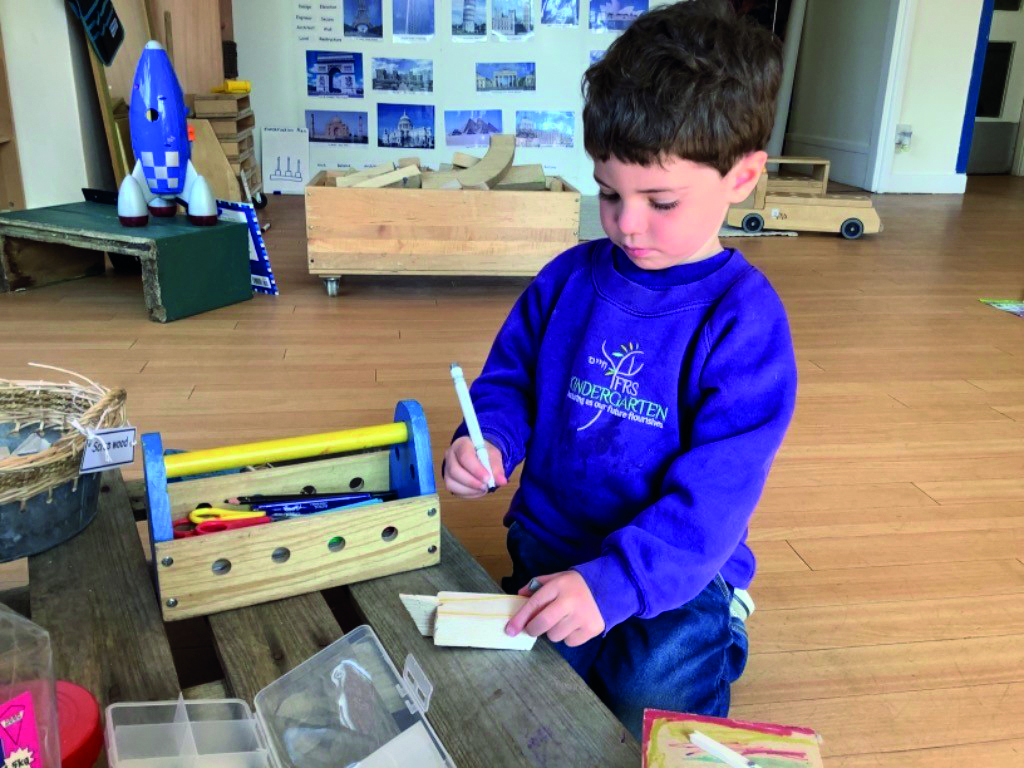
BLOCK PLAY
Staff have observed greater use of maths, richer language and more questioning and problem solving occurring during children’s construction, block play and woodwork.
‘One of the changes to the learning environment that we gained from moving to the new building was a larger block play area. We also now have a woodwork bench permanently indoors,’ says Emma.
‘I feel the visit to the building site has reaffirmed the reasoning behind our increased focus on this area and the benefits to the children by giving them more space for construction and the ability to leave their work and not have to pack away.
‘We feel this is all benefiting their play, their critical thinking has gone up a level and their eye for detail and the skill of observation in their play has been a real affirmation to us.’
BOOK CORNER
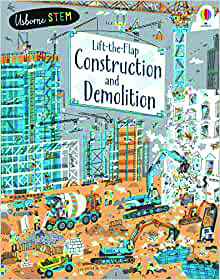 Lift the Flap Construction and Demolitionby Jerome Martin and Peter Allen
Lift the Flap Construction and Demolitionby Jerome Martin and Peter Allen
It takes hundreds of people, dozens of machines and years of work to construct a skyscraper. Lift the flaps to see construction crews digging, drilling, pouring, heaving and hoisting.
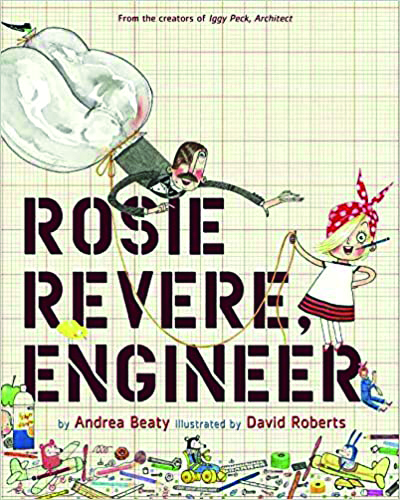 Rosie Revere Engineer by Andrea Beatty and David Roberts
Rosie Revere Engineer by Andrea Beatty and David Roberts
Rosie may seem quiet during the day, but at night she’s a brilliant inventor of gizmos and gadgets who dreams of becoming a great engineer. When her Great, Great Aunt Rose mentions her one unfinished goal – to fly – Rosie sets to work building a contraption to make her aunt’s dream come true.
 Great Buildings: The world’s architectural masterpieces explored and explained by DK
Great Buildings: The world’s architectural masterpieces explored and explained by DK
An overview of the history of architecture from the ancient world to the present day with guided tours of masterpieces from the Great Pyramid of Giza to Chartres Cathedral, Sydney Opera House and the Guggenheim Museum in Bilbao.
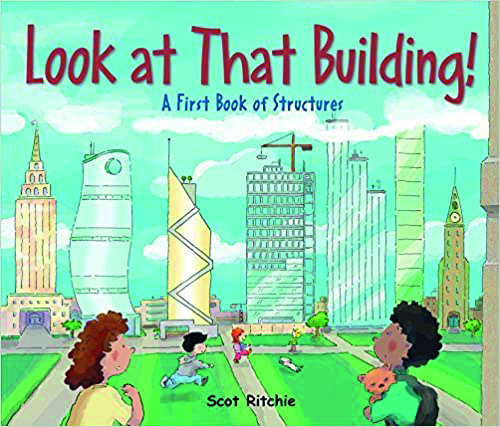 Look at That Building: A first book of structures by Scot Ritchie
Look at That Building: A first book of structures by Scot Ritchie
Get to grips with basic construction concepts, including foundations, beams and frames, as five friends learn how to build a doghouse for their pet.
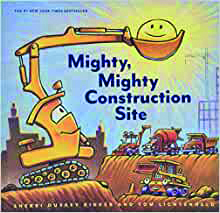 Mighty, Mighty Construction Site by Sherri Duskey Rinker
Mighty, Mighty Construction Site by Sherri Duskey Rinker
All of the favourite trucks are back in the construction site and facing their biggest job yet. They find out that with teamwork, nothing is impossible!
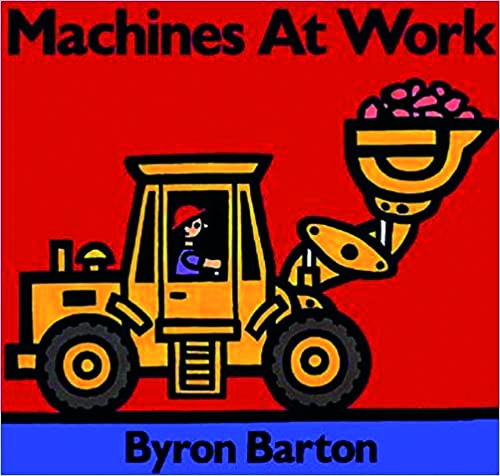 Machines at Work by Byron Barton
Machines at Work by Byron Barton
The workers gather and their machines are ready and waiting.









